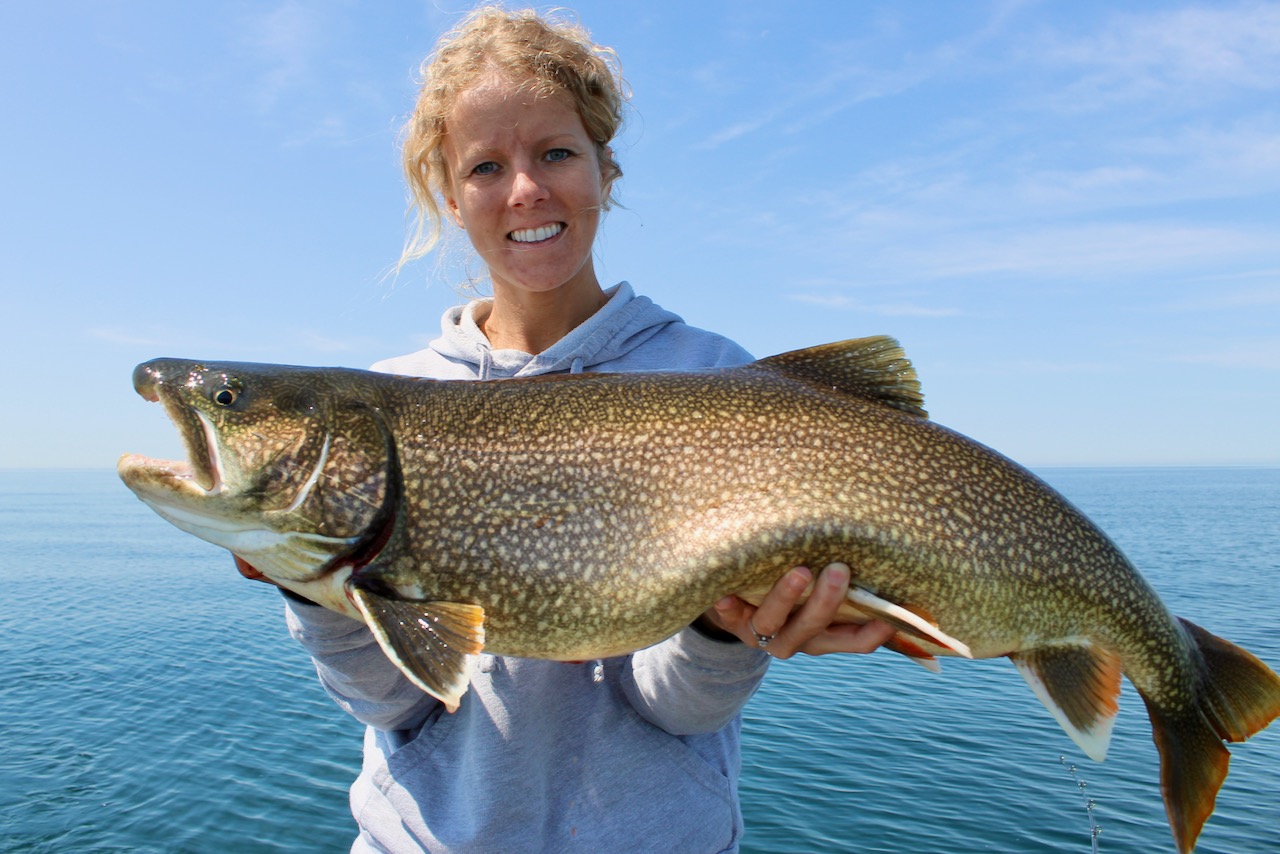ON THE MARK
Why spotting, stalking and sniping is often far more effective than trolling
Advertisement
SNIPING LAKERS
To understand why I changed strategies, imagine you’re with me trolling for trout, puttering across an expanse of open water—or around a hard-bottomed feature—at a relatively slow speed. When the sonar marks a fish 20 feet up off the bottom in 65 feet of water, we keep advancing because our lines are trailing behind the boat.
Advertisement
At that point, all we can do is hope the trout will spot one of our lures when they catch up, then follow it and strike. If that doesn’t happen, we’ll slowly swing the boat around, retrace our path and zigzag over the same spot. It’s a tried-and-true plan, but consider this alternative.
We’re on the same lake with the same fish in the same location, but this time we’re moving two to four times faster, watching our sonar unit like hawks. I’m driving, and you’re at the ready to snipe, holding a rod rigged with a heavy tube jig, spoon or Jigging Rap-style lure. Now when we spot the trout on the sonar, I pop the throttle into reverse and back up over the fish. At the same time, you open the bail on your spinning reel and let the lure plummet straight down. The trout sees it falling, rockets up and engulfs it before I’ve even popped the motor into neutral.
This tactic is frighteningly effective because you’re in total control of your lure—it isn’t just somewhere behind the boat. And because the boat has backed up over the trout, you can watch on the sonar screen how the fish behaves, then react accordingly. If the trout sits tight and doesn’t race up to intercept the lure, for example, I like to stop the lure a few feet above the fish’s head, making it act like a startled cisco or smelt getting ready to flee. The trout then can’t resist the subsequent panic-stricken flight of your bait, and you can watch all the action unfold on your sonar screen.
Advertisement
As a bonus, for this tactic there’s no need for downriggers, leadcore line or other trolling systems that require special equipment. In fact, you likely already have everything you need—a medium- or medium-heavy rod, and a reel spooled with 10- to 12-pound line. A chartplotter is obviously also required, but most anglers have at least a basic model these days. And when you have two people in the boat, you can both get in on the action by switching driver and sniper positions after every couple of fish.

